Leaderboard
Popular Content
Showing content with the highest reputation on 30/10/17 in all areas
-
Hello, this is my last finished model. Because of the university it took me a long time to finish it but I had fun in the process. This Eduard kit is excellent but it requires attention in the assembly because you can have problems of fitting later, even more if you use the aftermarket resin parts. Decals are great and the detailed level is high. I have included: Eduard PH parts to the cockpit and exteriors Eduard Masks Eduard Brassin fuselage guns Terrains Dark Earth from Ak interactive and WWS static grass (4mm and 2mm) for the base It was painted with the K4 paint set 2 for Luftwaffe Aircraft , and weathering and scratches were made with Gray and Blue Camouflage AK paneliner, K4 pigments sets and pencils. It represents the Fw 190A-5 Werk No. 2594 flown by Maj Hermann Graf CO of JGr Ost on Bordeaux, France, Spring 1943. .23 points
-
Nothing is better than Eduard’s little Spitfire when I need to restart my mojo. So here she is: a part of Mk. XVI Dual Combo with Extradecal decals. Machine of No. 340 RAF squadron AKA GC 4/2 "Ice de France", 145 Wing, 2nd TAF 1945. Resin upper cowling, exhausts, gun barrels and wheels, Gunze paints and varnishes. Thank you for looking.23 points
-
Hello guys First model finished this year. Please let me know what do you think. Cheers. Pierre.19 points
-
Today I present to you my recently finished Revell Eurofighter Typhoon in 1/48. Revell kit builds into a fantastic scale replica but its not without its challenges. To build this kit, I have used the following detail sets. · AIM-120 from Hasegawa Weapons Set E X48-17 · Eduard EF2000 Single Seater Detail Set 49367 · Two Bobs RAF 90th Anniversary , RAF Coningsby 29th Squadron June 2008. I have used Gunze Acrylics, my preferred brand of colours, to paint the aircraft. I have used Gunze H334 Barley Grey H332 Light Aircraft Grey, H57 Aircraft Grey and also some black and H53 Neutral Gray to do some pre and post shading. Some panels on Eurofighter tend to fade and give the impression of bluish color. For that I have used mix of H67 RLM Light Blue and H418 RLM78 Light Blue. The weathering is slight and I have tried to replicate the weathering effect after viewing several photographs of RAF Typhoons on the internet.19 points
-
Hi folks, my humble project depics a Pz.IV, Water War, Golan Heights, 1965. This version saw combat against Israel in 1965 (Water War) and 1967 (Six Day War). Well, I used a 1/35 Tamiya's Pz.IV Ausf.J, MR Models Panzer IV Syrian Army conversion code 35174 and Academy Pz.IV late track links. It’s unclear if the Syrians installed modern Soviet radios in any of their Panzer IVs, but only in this particular case, I decided to put an antenna. Heavy weathering.17 points
-
Hi fellow modellers, this is one of my long term projects I recently got finished. Whilst the original kit is pretty spot on as far as the main airframe specifics are concerned, the mouldings suffered from poor moulding quality. That means I completely reworked the surface, rescribed the panel lines and added the rivets. Most of details as cockpit, engine, canopy, undercarriage etc. were scratch built or heavily modified. The decals come from fabulous Radu B. decal sheet and since I was building one of the earlier machines with 4-guns wing, I opted for "42" which wore the unit score. Flown in August 1941 on Eastern Front by Escadrila 42/52, Grupul 5 Vanatoare. Cheers Libor15 points
-
Hello BM's, May I present Airfix's P-40B in 1.72 from the Pearl Harbour 75th AGS... with a difference: I modelled this P-40B to represent Flt.Lt. Clive R. "Killer" Caldwell's mount in 1941. Caldwell was the leading Australian air ace of World War II. He is officially credited with shooting down 28.5 enemy aircraft in over 300 operational sorties, including an ace in a day. In addition to his official score, he has been ascribed six probables and 15 damaged. Caldwell flew Curtiss P-40 Tomahawks and Kittyhawks in the North African Campaign and Supermarine Spitfires in the South West Pacific Theatre. He was the highest-scoring P-40 pilot from any air force and the highest-scoring Allied pilot in North Africa (source Wikipedia). No new techniques on this one, but I thought I'd try and display the craft after a good few months in the field, sand blasted, dirty but well serviced and ready for action. Decals are from Xtradecal, courtesy of @murfv after a trade up. Hope you enjoy the pictures and as usual critique always welcome. Cheers, JB.14 points
-
Hello, Here's my just finished 1/72 Revell Eurofighter Typhoon. It's the 2007 kit, done as an Italian one with the kit decals. Coincidently, it is the same one as the one that crashed into the sea during a display, a couple weeks ago. It was painted with MR Paint and Humbrol, mostly. I must say I quite liked the build, not many problems were encountered. I did find it a bit odd that you have to make your own canopy supports if you want to have it open, though. Anyway, here's the build, I hope you like it. Thanks for looking. Pete12 points
-
The very first Prototype with fixed wings and 4 lift engines. It is scratch built with parts of Revell and Streem 1:72. More pictures to come if you like. Cheers!10 points
-
Hello everyone. Here is my version of Tamiya's Mosquito finished recently. I used Eduard PE set and in order to add some visual interest I think the 'story' was: 'The right engine was hit and underwent an overhaul. However the nacelle still shows lot of soot deposits and also mechanics temporarily installed a different spinner' The entire WIP can be seen here:9 points
-
Nice little kit by Airfix, really enjoyed building the kits that I finish in one day time. Highly recommended, cheers. Airfix P-51D 1:729 points
-
evening folks been a bit slow around here lately after such a blazing start as life & day job got in the way a bit, and I also spent some time (& money) tyrying to get a better set up for photography as the model is so big it can't just sit easily on my bench for a WIP shot - I still have a crappy little £50 digital camera, but I needed a booth & some lighting..... .. so, al little more progress.. ..after so much large scale assembly, I thought I would switch it up a bit and work on something with a bit of finesse.. ..I started by laminating the three layers of the main pilot's bulkhead - there is a base plain layer, a half etched detail layer carrying rivets & openings and then a framing layer.. ..then started to add some framing & bracing that is seen in references... ..and then more, there is a sill around the seat that needs to be fabricated.. ..and then the bulkhead will go about here... ..started to think about the seat - I found this pic when I was doing the HpH Hornet and now I look again at it I am 100% convinced it is from a Firefly - I have a few views of it.. so it proved useful in making some balsa moulds to vacform some of the shapes seen.. ..still loads to do, but it made a nice change from sanding & shaping... ..hopefully the photos are ok - I quite liked the blue background I used to use so will see how I can improve it TTFN Peter9 points
-
Well the wings decided they wouldn't behave and left me with either a gap at the top, right in the crease of the fuselage, or underneath. I went for the latter and hopefully this pic will show why... Ok, maybe not. But the wing joint is nicer at the top than underneath, I promise you. Not entirely sure why the pilots chair is on the wonk, a tad annoying but too late to rectify now. Also note the freshly trimmed prop complete with blade that are a uniform length. As to the underside, well... Yeah, that's gonna need some work, hence the added extras ready to be smoothed down, need to pop a little plastic putty in them and the rocket/bomb dimples before that happens however. Maybe more later this week!9 points
-
In May of 2016 I built the Hasegawa OV-1B kit. Due to a series of unfortunate events the clear parts got totally messed up (a common theme in my builds). In my efforts to get new transparencies I ended up with an OV-1A and an OV-1B kit. I had only intended to build an OV-1B kit but since I now had all the parts to build an OV-1A, including one set of good transparencies I decided to do a JOV-1A. In my case all that was required to convert the OV-1A to the JOV-1A was the addition of the extra weapons pylons and the appropriate XM-157 and XM-159 rocket pods, which I already had. The JOV-1A was an Army modification to arm the OV-1A for close tactical support, although the official reason was for fire suppression and target marking. These were deployed to Vietnam for operational testing and then withdrawn due to Air Force opposition to the Army use of fixed wing attack aircraft. The kit itself is of late 1960 vintage and shows its age, but there were no major issues other then the decals. They were slightly yellowed, but a few weeks taped to a south facing window fixed that. More serious they wing decals were over sized and they had color alignment issues. They did go down well with only minor silvering that was easy to correct. I used the Cobra Co. interior which I acquired from Lone Star Models. So on to the pictures Next up is the Mach 2 E-1B. Enjoy.8 points
-
A pyrrhic victory tempered by the foibles of Postimage today. Not a stellar effort and to be honest I preferred building this to the recent Airfix 262. I had a few mishaps along the way as you may well see from the images but overall the fit after fettling etc. wasn't all that bad. A couple of areas to watch out for are the outlets. They fit perfectly but will leave the pipe protruding too far from the fuselage so awkward work around this area was called for. The cockpit tub base needs rubbing down to the thickness of a Rizzla and you'll have to play around with a bit of plastic as the tub/nosewheel plate won't fit at the same time. The decals are translucent but well behaved, the wraparound for the hook is too short in diameter as well. Tip lights would have been better represented by clear plastic but I couldn't be fussed over that. Underside Xtracolor white and topside BS 5381C-638 (DSG gloss). Toned down with a mix of matt and satin Humbrol varnish and pastels rubbed in the lines. More indoor phots as the wind is a bit brisk outside today and the light is typical in and out one minute to the next. Got the Trumpy next inline8 points
-
It really is hard not to feel affection for kits you saw in shop windows as a kid isn't it though Chris? There used to be one such model shop tucked away beside the railway bridge at Kingston station that I used to pass every evening on the way to get the bus home. The chap who ran it always seemed to favour Matchbox at the front of the display and in the last few weeks of term before Christmas the window lights used to pull you towards them like a month to a candle-flame - usually resulting in a missed bus... Not at all hard Chris - just needs a small square-sided file that will fit into the angle and a gentle filing motion to avoid stressing the joint. I have to say that amateurish as my efforts may be I find soldering an incredibly rewarding process; plus, a lot of the time using metal parts at this scale yields a superior 'sharpness' to the shapes than plastic can provide. Go on - - give it a try yourself! I understand and share that instinct hendie. Nothing against modern kits for sure, but I find my warmth and interest drawn more towards - shall we say veteran? - offerings that require creative problem-solving. I like very much the idea that the things we build all contain traces of us - whether intentional or not - with older kits underwriting this process in detail. Neither can you overlook the vitality of memory and nostalgia of course, in drawing up something from a shared past and reinterpreting it in front of others. 'Rebooting'. I believe that's all the rage with the young personages nowadays. Tbh I'm surprised at having got that much done Bill! You'll possibly be pleased to learn that 2018 has been designated the Year of the Completed Boxcar however. With a 1000 page parts manual for it on CD now safely in my paws, there will be less time wasted in future puzzling over photographic ambiguities... Not at all irrelevant! Makes perfect sense as a memory-trigger for post-WW2 generations in the UK! When typing the word 'railings' in the post originally it sprang to mind almost immediately how my maternal grandfather - also a Bill btw (though for confusing reasons his name was actually Herbert) - related driving round S. London in 1940 with a bunch of ARP lads, collecting the very same items from various municipal sites in places like Dulwich and Catford. It's not much a war story of course , but being a publican he obviously played a vital part in helping the nation to victory through beer. Ta Pete. Yep, been at the intakes earlier and took a picture just for you. I'm trying my best to not finish anything. Honest. It's a state of delayed vacillation that just won't leave me alone. Close but no cigar you might say? Do it. Do it. Do it. Do it. Do it. Do it. Do it. Do it. Do it. Do it. Do it. Do it. Do it. Do it. Do it. Do it. Do it. Do it. Do it. Do it. Do it. Do it. Do it. Do it. Do it. Do it. Do it. Do it. Do it. Do it. Do it. Do it. Do it. Do it. Do it. Do it. Do it. Do it. Do it. Do it. Do it. Do it. Do it. Do it. Do it. Do it. Do it. Do it. Do it. Do it. Do it. Do it. Do it. Do it. Do it. Do it. Do it. Club cravat and sock-suspenders at the very minimum. 14:00 check! Be lovely to meet you at last Ced, along with the rest of this posse! Ok. Let's start today's post with confirmation that the plastic packaging CMK use is suitable as glazing for armoured limousines: The results of trying to punch out a 3mm window for the gondola doors. That transparency above is not at all thick, the punch is sharp and I was belting it to beggary with a geology hammer - what do they make this stuff from in the Czech Rep.? Lexan? Switching to the packaging from a pot of Parker ink proved a little more amenable to excision: Same procedure as I used on the replacement glazing for the fuselage: mask both sides of the transparency, some TT backing on one side to stop it falling out and then dribble some epoxy around the reverse sidelike so: The glue is black here as I added a little pigment in order to let me see that I'd got the glue around the whole circumference, plus it only occurred to me later that having a black edge around the porthole like that might be a good way of possibly simulating the gasket/seal around the glass. We'll see when the tape comes of in a day or so. As you can see from the hideousness of the above shot, this is another of those 'faith-based' processes in that you need to put too much glue on initially so that there is sufficient to run around the edges and fill up any gaps between the transparency and the plastic opening. After a couple of hours of letting that settle you then need to wipe off the excess (make sure that you're using 24hr epoxy for this - not the 5 min stuff) before it has a change to harden into a solid mass, leaving you with this: If all has gone well you should find the glue residing now only around the boundary of the transparency, allowing the TT facing us to be peeled off in a few hours and replaced with fresh stuff before the absorbed glue has a chance to set it solid. I also did a visual check to see how well the interior textures had settled down: ...and am quite pleased with the subtleties involved. Looking in at the front from a reverse-angle reminds me that there are still the magazine holders for the forward MG to add: Thanks to Benedikt's superb documentation find I also have a detailed basis to build the harness and gun mounting for the rear position as well - still mulling over how best to deal with the big 'cog' circumferences (circumferii?) for both of these. Looking at the IP decals over on @Stew Dapples lovely Kawanishi build recently caused me to alter my plans for this element of my own build: Simply printing out the instrumentation dials and adding them to a painted IP panel as Stew's decal set allows him to do looks promising enough that I'm inclined to nick that idea follow that route also... Also this morning I need to do a little work on the wing intakes to thin the walls of the intake covers. Before doing so however I worked out why I'd cracked the seams on my gondola repeatedly during drilling the locator holes for the railings - I'd been over-tightening the vice, causing the parts to flex and separate. This time around I cannibalized the rubber 'buffers' from my larger vice and used them here to hold the wings in the smaller desktop job: This is about as thin as I want to go with that - any further and we'll start buckling the the covers: Another minor task was simply to drill out and glue some 0.8mm tubing to act as a mounting for the blind/night flying aerial to be slotted in at the end: By this stage in proceedings, after several days effort the bench was in an absolute state: Continually misplacing tools is, I find, Nature's way of saying 'Clear up you messy so-and-so'. In the process of clearing up some of the farthest corners I even discovered these green and blue things lurking in the undergrowth: They look vaguely familiar... With the place cleared and a pause for a reflective croissant, I decided that the gondola was now in sufficient shape that I would attach the wings to it. The kit instructions of course maintain that you should do this after gluing both the gondola and sponsony things to the fuselage, but this limits access to the underside of the wings for filling and sanding purposes, which imho will be a pita. So we'll try it this way: Foam pellet padding to keep it nicely squared up and stop from slipping and thence a test fit: I used this photo as the actual reference to ensure that I'd got the dihedral correct:I find looking at the structures in silhouette like this allows you to visually judge with greater accuracy if things are in alignment, absent the distraction of other details. In the above photo you can see also a pronounced 'shoulder' to the profile of the upper wing a third of the way out from the roots; that slight gull-like angularity can fool you into raising the wing-tips too much if you're not careful, so a silhouette view is useful to check that the lower wing surfaces (being flat planes) remain correctly orientated at 90° to the gondola on either side. As I'm going to be handling the wings for a while yet before the whole sub-assembly is fixed to the fueslage, I again used 24hr epoxy to give a good solid bond. Some central weight also helps counteract any wing-droop over time: Another key alignment indicator - making sure that the trailing edges of the wings match the 'flare' at the back of the gondola section: I took this next shot for @Pete in Lincs so that he can say 'Luft '46' again! Up until now the kit had still seemed rather modest and intimate in size - like many such builds do until the wings go on and you suddenly get a sense of the greater span of the thing: That's as much goodness as I can cram into for you today . The wings n' windows can sit overnight curing. Bank Holiday here today and as is traditional in this household I have to go fix a toilet cistern. Tony8 points
-
Thanks Tony and Johnny No need to restrict your use of emoticons... unless you want to, of course. No progress yesterday as I had a trip to Duxford. I took advice from BMers not to post that I'll be away (mainly to avoid parties in the house) but now I think about it I should have said in case people wanted photos of things - sorry. Anyway, why a trip to Duxford? You may remember when I built the Rapide that @brianj1uk posted that he was the pilot in the video! What I didn't tell you is that Brian PM'd me and very kindly offered to show me around 'Classic Wings' when he was there. Brian's been exceptionally kind and persevered and, third time lucky, I could make it yesterday. Not being a 'morning person' I stayed overnight at the same place @Procopius and I stayed in when we went to the BoB display, just up the road from Dux. Remember this PC? IMG_8049 by Ced Bufton, on Flickr I think I even got your room this time, last one on the right? Luckily for me (groan) the chef had taken the night off to watch Boxing so I had a trip around the area trying to find somewhere that did food and didn't have a kids Halloween party. Early to bed, cooked breakfast and then out to Duxford. Brian met me at the Classic Wings cabin and I was privileged to do his pre-flight walk around with him. I must admit the Harvard has not been one of my favourite types but some of Brian's enthusiasm soon rubbed off - she's a sturdy bird but beautifully designed with some great features. Oh, and big. Sturdy girl. Here are a few of the shots I took of her and Brian: Brian was very busy with paying customers but I was more than happy to wait around and soak up the atmosphere. Like the Harvard 'blarting' its way into the air. Joining the crowd around the Spitfire TR.9 (another one!) and seeing both flying around. 'Miss Pick Up' was out for an engine test: I'd arranged to see Brian again for a sit in the Harvard and Rapide so went back to the hut. Brian took my coat and asked if I had any loose articles - just my trousers, but we agreed it would be better if I kept those on. Out to the T6, in the back and then... they strapped me in! Brian told me we were going for a quick flight - how excited was I? I'll bet you can imagine. We taxyed to the holding point and went through the pre-flight checks. "I'm rushing a bit because the Spitfire's behind us" said Brian and off we went. The cross wind made it an interesting take off but soon we were in the air and climbing, fast. "I was hoping that the Spitfire would overtake us and we could have a look" said Brian, but she was still on the ground. Time for a bit of 'training' for me on effect of controls. She's very responsive but you can feel the inertia. Very nice. More Harvard love. "There's the Spitfire" says Brian and, sure enough, she was at ten o'clock low, right to left (sorry Steve, missed my chance to 'Tally' again!). Brian waggled the wings, flung the Harvard on her side (I think that's probably the right word for it) and we went after her, approaching in a sweeping turn, high at her eight o'clock... well, probably more like half-past seven but you get the idea. I resisted the temptation to dagadagadaga, just. We pulled up alongside, pilots waving to each other, and flew in formation for a few minutes. As Brian said, "Only at Duxford". Then, as if on cue, the sun appeared and lit up the TR.9. What a sight. It will certainly be in my mind for some time. We waved goodbye, peeled away to the left and headed to a suitable spot where Brian demonstrated the aerobatic abilities of the Harvard. Loops, barrel rolls, aileron rolls (I now know the difference) and Immelmans. Amazing. I now have 'Harvard love'. Thanks Brian, very, very much. After a sit in the Rapide (gosh it's tight in there for us 'ample' chaps) I walked away in a daze. Part of me is still there, upside down over Cambridgeshire... I shall, of course, be modelling T6 Harvard Aviation's 'Wacky Wabbit' soon, after the TR.9. If I can find a decent kit. How's this one chaps? Something to look out for at Telford. I've also upgraded my personal status from 'lucky bu99er' to 'absolutely privileged'. As we all know these things come in threes. I'm now certain to win the raffle for the Red Arrows Aston Martin. Certain. She's mine.8 points
-
Excellent - thanks. I'm sure I commented on this previously somewhere. The Fly leg just looks way too skinny. Nah, definitely not part of any AF/BF or TR in Sek Kong. I guess we didn't have them there. Cue, cunning plan A.. (betcha didn't think I'd do it did ya!) Which totally did not work as planned. I tried punching small discs but they were so transparent that you could hardly see them. It really didn't provide the effect I was looking for, so common sense prevailed and I ditched that idea. On the plus side, I now have a load of Disney Princess glow stars which I can place around my bedroom. So I cheated and just used styrene rod, which by the time this is all buttoned up will only just be visible. Well, I tried at least. Oh, I also added some more of those little electronicky parts to busy the front end up. I'm quite pleased with how they add to the effect. Now it was time to tackle the overhead soundproofing. In the 1:1 these panels are straight sided so I had a quick bash at that.. and didn't like it. I initially thought I could get away with painting the plastic black and laying the soundproofing over that - in the end I thought in order to keep my sanity and get something done on this build that I would just follow the kit contours and be damned. And we ended up with this - primed in etch primer. As you can plainly see, it's not as geometrically bland as the original and the tinfoil pattern is somewhat to scale, though could be doing with being just a bit larger. At this point, I am not redoing anything. The first coat of apple green went on, as well as some primer and color on the floor panel. I also, in another moment of hendism madness, I started drilling out the tie downs on the floor to add a little bit of depth. The kit detail is rather good if a tad flat in this area. So, going back to my earlier method of producing comms cable.... this time with a larger diameter drill If you do this to the coils... You end up with a whole bunch of these.... which coincidentally, fit nicely in the recess I just drilled in the floor. Tie down rings! A little drop of super glue to hold them in position, and we have a reasonable facsimile of the floor. You'll notice that I didn't so every single tie down, only those that stand a chance of being seen. The ones at the extreme left were my trial pieces. Then back to the soundproofing, and adding one more drop of pale green to the mix I had left over from earlier, and we start to see a little bit of variation in the panels. (I know there's only one light fitting so far - I forgot to add the second before I started painting, but it will be easy enough to incorporate later A few more drops of green as each panel is revisited and we end up with a right mess. Actually it's not too bad. Still miles better than the out of the box offering. Edging was added with some dark green, and the studs were pin drops of steel. There were a couple that end up being over-sized but all in all, I'm happy with this. and a quick dry fit shows me that I'm on the right track. The paint will have time to cure overnight and I'll follow it up with some Flory washes, hopefully much more subtle than the rear bulkhead cover. - you don't get as many grubby paws messing about with the overhead soundproofing. there's still a few bits and bobs to be added to the overhead panels - the monkey harness beam for one, but I think I am getting close to being able to stick the floor and overhead panel ('ceiling' panel just doesn't sound quite right for a helicopter) in the fuselage8 points
-
The Tupolev Tu-95 (Russian: Туполев Ту-95; NATO reporting name: "Bear") is a large, four-engine turboprop-powered strategic bomber and missile platform. First flown in 1952, the Tu-95 entered service with the Soviet Union in 1956 and is expected to serve the Russian Air Force until at least 2040.[1] A development of the bomber for maritime patrol is designated Tu-142, while a passenger airliner derivative was called Tu-114. The aircraft has four Kuznetsov NK-12 engines with contra-rotating propellers. It is the only propeller-powered strategic bomber still in operational use today. The Tu-95 is one of the loudest military aircraft, particularly because the tips of the propeller blades move faster than the speed of sound.[2] Its distinctive swept-back wings are at a 35° angle. The Tu-95 is one of very few mass-produced propeller-driven aircraft with swept wings. Pylons and missiles X-101 made by 3d printer7 points
-
Sadly I don't have this model any more, I can't even remember which version it was. Aside from the base and the poor representation of the wheel chocks, this was built OOB. Apologies the pics are small, I can't find the originals either. I built this back in 2012. Thanks, D7 points
-
Thanks James! I've finally had some time to do some modelling again. Off course, being away on the C4 Model contest in Malmö over the whole weekend helped a bit, even though I had to explain to the public what I was doing over and over. (and no, none of my models won any awards. Competition is fierce, and neither Aussie Eight #1, or the Brigand or Beaufighter were up to scratch...) The wheel wells recieved a wash mixed from Tamiya panel line inks, of the brown black and grey varietey thinned with some Zippo lighter fluid to help with the flow. The main gears goe the same treatment. Now I see that I need to to some more filing and filling on the nose gear, since I don't think the door attached to the gear will cover it all. Itäs good to have something to do I guess... The airbrake itself was the next one up for wash. Looks suitably grubby. It's installed in the lower airframe together with the bay, but I didn't glue the brake in place yet. This way it will act as a cover for the bay, even though the fit is not 100% good. Speaking of bays, here's the airbrake bay itself: It could or should have a lot more wire harness and piping I guess, but I need to makes sure that the hydraulic arm for the brake still fits. We'll see how it goes. Good and understandable pictures are a bit hard to find though. After this voyage in the seas of dirt I turned my attention to where one normally starts, Cockpit time! A good helping of plastic, finely cast and also a quite big set of self adhesive etch. I haven't tried that before, but how hard can it be? Actually not that hard... The whole lot is painted with Ultimate black primer. I was going to to the entire pit in Tamiya Nato Black, but when looking at the Eduard fret that is very black I decided not to. If I add some dry brushing here and hope for the best? It should be passable for a british 50:s era cockpit atleast.7 points
-
Christ, has it been a month? Never have children. As I type this, Grant, who resembles a neurotic bank manager in late middle age in appearance and a nineteen-year-old rave aficionado in sleeping habits, is "helping" me, because he has been helping his mother sleep for the last two hours, very loudly. I love Grant, of course, and am spending money on his medical bills hand over fist to prove it, but it might be fair to say I don't particularly enjoy his company. In any case, I managed to make it downstairs to work on the RWD-8 in the first time in a long while. My children, and depression over the spiraling costs of my children, have kept me upstairs and senescent lately. We budgeted $1,000 to handle birth expenses during Mrs P's (unpaid) maternity leave, only for costs to spiral to four times that and climbing. Now, we're two middle-class professionals in what is unquestionably the only nuclear-armed world power to be ruled by an infant, so we won't be annihilated by this, but it has put a damper on things of late (and really makes one think about the fates of those people more clever and virtuous than us -- as if that were possible! -- who might not have the financial security we do and who find themselves in this predicament.) Anyway, the RWD-8. I crept downstairs and alcladded the various bits that seemed like they'd need it, and put some more Khaki on the bits that seemed like they'd need that: I also took the opportunity to patch up the mangled S, and I think it came out okay: Before: After: I then assembled the central support for the wing: It fit beautifully, and for once, my super glue adhered perfectly (it's a brand-new bottle). The resin wing (which now sadly is a bit of a curiousity, as Arma Hobby no longer do resin, alas!) fits quite well atop it, though the tubular structure's curving-up bit (technical term) will need a teeny sand. Other than that, perfection. Oh, and Winston is a train man for Hallowe'en. He is under the impression that he will get to ride/drive a train in this capacity.7 points
-
Hi guys, this is the final reveal pictures of the Bride of Frankenstein screen capture diorama. I scratch built a large part of this project and had a lot of fun adding all the effects and extra props to make up the laboratory, also just in time for Halloween LOL! Enjoy the pics. Finally, you can see my work in progress in the link below.6 points
-
Hi, Here is my latest build. This is Eduard's rebox of the Hasegawa kit. A very enjoyable build. I used sprue A of the Daco set to get rid of these nasty rivets on the wings but had to fill those on the fuselage. Enjoy, or not Antoine6 points
-
I wasn't sure whether to put this topic here or in the photography forum where I usually post. This one has a lot more words than images, so thought it should go here. Between 1977 and 1987, flight test of the AGM-86 Air-Launched Cruise Missile (ALCM) was accomplished for full-scale development of the missile and subsequent upgrades. Many test launches took place in the Western Test Range off the California coast, the missile threading its way between population centers to impact on one of the land test ranges in the western United States. A typical mission would have the missile follow a pre-programmed mission profile, going “feet wet” near Vandenberg AFB, through the Sierra Nevada mountains into the Edwards /China Lake operating airspace, then north to targets in the Utah Test and Training Range near Hill AFB. Safety chase aircraft were required to accompany the ALCM along its flight path to ensure the missile didn’t deviate from its programmed profile or to ‘mark the spot’ if the missile crashed at some point during the mission. The safety chase mission was assigned to a dedicated group of aircraft under the 6510 Test Wing under the Air Force Flight Test Center at Edwards AFB. The aircraft were flown by the 6512 Test Squadron (Test Ops). Between four to six aircraft were required, depending on the mission profile, plus a spare, and a tanker. The aircraft selected were F-4Es and comprised what was often referred to as the ALCM Chase Flight. Normally, finding such a group of similarly configured aircraft on the Edwards ramp would be difficult, but the 6510TW had inherited the F-4s previously operated by the USAF Aerial Demonstration Squadron, AKA the Thunderbirds. These F-4Es were relinquished by the team in the wake of the 1973 ‘oil crisis’ in favor of the T-38A. The aircrafts had no radar fitted, the original short cannon muzzle fairing was retained with the aperture faired over, the rear most fuselage fuel tank (tank 7) was isolated to carry smoke oil, and several other modifications that made them less than desirable for operational Phantom units. The only modification needed for the ALCM mission was a missile destruct radio control unit in the rear cockpit to be activated if the missile deviated from the planned flight path towards, say, a population center or a condor preserve. These aircraft were USAF serial numbers: 66-0286 66-0289 Note: in 1984/85, ‘289 carried a deer kill on the left splitter plate in light grey. 66-0291 66-0294 66-0315 66-0319 66-0329 – Note this jet had a production “long” cannon muzzle fairing during this time. 66-0377 An ALCM chase mission basically consisted of two aircraft at the launch point. They would watch the ALCM separate and launch from a B-52, then proceed to chase the ALCM to monitor the flight path and watch for any anomalies. In the meantime, up ahead, at altitude, would be the KC-135 tanker with additional chase jets in tow. These F-4s in the tanker formation would take fuel as necessary to stay ’topped up’ ready to replace the chase birds when low on fuel (“Joker”). This is what the relief birds would look for: Hence the white upper wings – easier to spot than a full camo jet or the missile itself against the terrain. The relieved jets would climb and join the tanker formation for aerial refueling. The procedure would continue until the ALCM reached the target area or its flight was terminated. Markings Already mentioned the white upper wings. The white on the wings wrapped around the leading edge and wing tips. Before 1979, these jets wore standard SEA camo with the light grey undersides. The blue tail band with the white borders and X’s was indicative of the 6510 TW. The national markings were in full color. No tail codes. Between 1979 and 1981, the aircraft received the wrap-around camo treatment and all but ‘377 carried segmented/stenciled national insignia. ‘377 retained the full color star and bar. Some aircraft had black canopy rails yet few carried crew or maintainer’s names. The “ED” tail codes were applied in late 1982. In 1984, someone had the idea to name the jets after Snow White and Seven Dwarfs. Unfortunately, they started with “DOPEY” on ‘291. The name was in black two-inch block letters on either side of the nose cannon fairing. Before any other names could be applied, the wing CO went out to fly ‘291. When he saw the name that was the end of that. I mentioned the deer kill on ‘289. On a deployment to Eglin AFB the jet hit a deer on the runway when landing. The deer was taken down the left side going between the main gear and the external tank…. lost the gear door and killed the fuel tank. The deer didn’t survive either. When we went to pick up the jet (on the way back from the Piper Enforcer visit) the Eglin maintainers had painted the silver deer “kill” on the left intake splitter and the name “DEER SLAYER” in 2-in black block letters on the cannon fairing. When the dedicated ALCM chase mission went away, so did the camouflage. I left Edwards for a posting in London in 1985, by the time I returned to Edwards in 1988, all of the F-4s had gone “albino” – overall white with red conspicuity markings on the wingtips and tail surfaces. They had also been formally redesignated as NF-4Es. And ‘329 got its short muzzle fairing back… Your humble scribe with the DEER SLAYER - “Hero” portrait for the squadron photo album – many years (and pounds) ago. Thanks for looking, Sven6 points
-
Started putting together the pilot's area of the cockpit: And dry fitted: Sneak preview of the nose in place - it all fits superbly; this is a great kit: I am away tomorrow, so nothing more until Weds. Crisp6 points
-
... and off: Untitled by Ced Bufton, on Flickr Matt coat then floats on and rigged. Oh joy. Mojo required but nearly there.6 points
-
Built from the Airfix kit with Master pitot and Neomega seat. decals from Model Alliance. FOD covers scratchbuilt.6 points
-
Last post for today, some useful progress this evening, first off continuing the build following the instructions, the next assembly was the pilot seat. This was painted and weathered before installation Then of course the realisation hit me that I'm going to need a pilot! Thankfully I've got a selection of PJ Production resin RAF WWII pilots on hand plus some other figures to use for the rest of the crew... So first off, the pilot. Now there is an issue in this kit of clearance for the canopy, so in the end I had to get the dremel out to get the resin figure to fit and with a test fit of the canopy to be sure Then using a mix of arms, torsos and legs from the Airfix RAF kit and some necessary surgery to remove a 'flapping' parachute pack from the runnign pilot: Then chopping the legs off one of the crouching crewmen to attach to the torso so he's kneeling, and with some arms from some of the other figures (the lumps of blue/white tac are handles for holding the pieces while painting the insides I will be putting the observer in as well as he can be seen through the windows, but not sure what to do about the rear gunner position, but then I'm not sure how many crew members they flew with in 276 Sqn. Norman Franks book mentions 2 crew, but then a page or two later describes a rescue undertaken by 276 and namechecks three crew of the Walrus, so I'm going to stick with 3 crew members and not worry about a 'rear gunner', which makes life a great deal easier! More tomorrow hopefully6 points
-
I think I am basically done here: I will take some proper RFI photos later in the week, but I think I have crossed out the whole snag list! This Airfix kit is highly recommended, despite being over 20 years old - particularly if you address known deficiencies (which are far from deal breakers, IMHO) with some after-market resin, as I have, and if you get the more recent boxing (the plastic is the same, but the transfers are way better). It fits beautifully, and though it has the Airfix deep panel lines, once painted they're fine. I have deliberately not washed or emphasised them, because they're sufficiently deep not to need it - in the photo above seen from starboard forward you can see them clearly, so they don't need to be made to stick out; they certainly don't on the original. Besides, as far as I know it's the only Seafire 46/47 in 1/48, so the only other option is to do some pretty significant kit-bashing; what's the point when this is available? A truly beautiful aircraft, of course, and lots of fun to build. RFI soon Crisp6 points
-
I wondered about that word choice as well. And Airfix, if you're listening, I am an experienced social media manager; it's what I do. Nobody will work harder for you than me (because I would need to be employed to live in the UK). I have very low self-esteem, which is why I work in the not-for-profit field, which in its own way is not unlike how things must be working for Hornby. Hire me.6 points
-
This will be my second build for this GB. I bought this kit two years ago at the Telford show in the kit swap. I thought I had bought one kit, but after having a closer at home I noticed there were two kits in the box. I had also bought a F-14 box and a BAC Lightning box. Also these were bouble in the box. The upside is that I have double fun. The second kit will go back in the stash. Here are some pictures of the content and some extra's. the Box (that is going back in the stash) The content. The kit was just started (I think) when I bought it. The former owner had the underside windows cut out. These were in the original kit closed with the original brown plastic. Also were some parts already painted as you can see. Here are the extra's. Exhausts and gun barrels from Quickboost. And some decals from Superscale. I think I will use the decals for a KG 55 Night-bomber during the Battle of Britain. Top Picture. I think I will start this after the Telford show. Cheers,5 points
-
I had lots of fun with this kit, although that would be my undoing. As will quickly become apparent, I installed lighting in her. Over 120 LED's to be less than exact. Sadly, I didn't plan ahead...a resistor blew and I had no way of accessing it to replace it without destroying the model. So now she gathers dust, unlit, sad...and alone. The wiring concept was very simple, a 12v power feed into to "rails" in the lower hull. And each LED had a direct connection to that rail, so they each got their full share of power, which is how I was able to get her so bright. Each LED was fitted with a resistor as they were the standard 3v LED's. In hindsight, I'd have worked out a way to run a single resistor outside of the model, so that it can easily be replaced. But hey, here are some pics of her in her heyday. And here she is with the lights on... I actually have a newer version of this in the corner of my workshop somewhere, as soon as I work out a better way to do the lighting, I will be redoing this from scratch, and making the next one even better! Thanks, D5 points
-
Good day, gentlemen. It's my next model. Made riveting, all edges sharpened.5 points
-
I liked the picture of the then redesignated F-9J in Detail & Scale so much, i used decals from my archive (rest is from kit)5 points
-
Well a bit more progress was made so here we go.. I had some little seat belts and since there's a fair sized canopy I whacked them in These are the belts.. This is the packety thing they come in I just cut them out and put a bit of silver on the buckles with this Bought it at the local art shop.... Ended up looking a bit like this after I wrangled and bent them in a few places and secured them with a bit of CNO CYA CNY YMCA.... whatever the superglue acronym is I fiddled a bit with the IP and popped some Future (Pledge in Australia these days) on the "bezels" (which is a fancy word for dials I learned from Giemme.....bless him and his knowledge and modelling skills!) Here it is.....pity you'll never see it once installed Now to actually try and be useful instead of just a self absorbed modelling tosser I actually have a tip for anyone building this kit When it comes to buttoning everything up you can get the IP and the Cockpit Assembly into the fuse very easily from "underneath".....in fact the cockpit assembly should go in that way. I started from the front and got the cowling and radiator glued Once I'd done that I ran glue along the top and bottom of the nose section from the inside to keep the joins neat. I then glued in the IP which was simple.....note in the photo above the points ("lugs") on the fuselage sides to locate the floor of the cockpit.... particularly the back two. I kept the glue away from the section aft of the cockpit for the time being I then fixed in the cockpit floor assembly from underneath ....there are specific locators for the back lugs but not the forward ones It might be a bit hard to see but this is how the locator at the rear of the cockpit floor should fit together (just two bumps of three visible near the very end of the cockpit floor) ....the gaps looks a bit weird between the cockpit floor and fuse but it is correct I dry fitted the rear cockpit/fuselage insert to check the whole thing was aligned correctly.....looked like everything was located okay Once that was done I started working my way along the fuselage towards the rear I lined up the join/gap at the tail end of the aircraft and then ran some thin glue along the seam. This seemed to work fine Once it was all buttoned up she sort of looked like this.. That's it for now I'm having a good time with this so far and the kit seems to fit quite nicely which is great. Thanks for looking5 points
-
Update #5 I'm still waiting patiently for the postman to deliver the missing Sabre engine nose half and spinner, so here is a small update before the fun part of the assembly begins. Since I last posted, I am now in possession of the latest Chris Thomas Osprey publication - #117 Tempest Squadrons of the RAF. I'm a big fan of this series and anything that Chris just happens to write or draw about. It's been said that one should never trust profiles without having a photograph to refer too, however when the artist that illustrates these just happens to be the #1 Subject Matter Expert of Hawker's finest on this planet, then I'm happy to be guided this way. The only problem I have with these types of references is that silly bods like myself usually want to model a lot more than just one example! So with the help of Mr. Thomas, I think I'm getting closer to choosing a scheme for this kit. Usually this is always known prior to my builds, however this kit has taken quite a different approach thanks to wanting to make a start in this GB. So, lets get on with it shall we?? Placed alongside Arthur Bentley's 1/72 drawings, the Matchbox kit is very accurate in outline and detail. There are a few understandable areas of simplicity, however this kit was first moulded in 1974 so we shouldn't expect too much. IMO - the main area that stands out is the canopy and whole cockpit opening. I've placed the Matchbox kit alongside Academy's 1/72 effort and you will see just how different these areas are? Correcting the Matchbox opening is no easy feat and initially I was contemplating using a Clear Vax Falcon canopy, however when placed on both kits, this canopy seems to be too wide at the base - just not right at all. Thankfully I have a spare Academy Typhoon kit and am seriously considering using this two part canopy for it's overall better shape and obvious strength in comparison to the Vac canopy. Here is a photo of the Matchbox and Academy 1/72 kits - notice the vast difference in shape and style around the cockpit. The Matchbox kit is also a good 2-3 mm longer and matches the plans perfectly. The next two photos show some work carried out to the cockpit sidewalls, kit modified Seat Base, New seat (Typhoon again) and the Mk.6 intake that differs quite a bit from the supplied MK.V offering. The sidewall framework was 'copied' off the Academy kit, so I'm not sure how accurate it is? Not much will be seen anyway, so it'll do. The kit's Radiator intake was hollowed out to just retain the overall shape and frame and scrap plastic was used to detail it a little. The metal mesh backing will be glued into place once it's all painted a lovely Grey Green. I must thank BM member 'bigos' again (see post#20) for pointing this out and providing clear photos to assist with my kit's modifications. That's it for now. I might start painting these areas properly tomorrow and smarten up that seat with a backing cushion and some seat belts. Cheers.. Dave.5 points
-
For your enjoyement, or otherwise, an Airfix P-40B finished with Kitsworld 112 squadron markings. Paint by Hataka, weathering washes and pigments by Flory and AK Interactive. This is an excellent and enjoyable kit to build. Build thread:5 points
-
So after a little time spent doing some fettling and fitting this afternoon, this is where we currently stand. A gap or two to fill but nothing too drastic, though I'm a little unsure how well that unsightly step in the wheel well will hide. Depending on work, this may or may not happen this week which may in turn lead to a little experimentation on the all over black...5 points
-
I started this kit in the summer of 2005. Got as far as painting it, then the build stalled. Twelve years later, I decided to finish her. This is the venerable 1/48 Monogram kit, converted into a C model using the long since out of production Cutting Edge conversion set. Cockpit is from Black Box (and isn't accurate for a C-model, but back then it was the only option). Painted with Tamiya acrylics, if memory serves. I managed to lose a few parts (mostly on the undercarriage), so I had to do a bit of scratchbuilding (speed brake, for example). I'm happy to finally call this one done.5 points
-
PK115 - Bf 110C. Brush painted, built out of the box, kit transfers. IMG_2560 by G DSC, on Flickr IMG_2561 by G DSC, on Flickr IMG_2563 by G DSC, on Flickr IMG_2562 by G DSC, on Flickr IMG_2564 by G DSC, on Flickr5 points
-
Since I've been babbling on in other threads about the FJ Fury fighters and the odd bit about the new Sword kits, I thought I should put my money where my mouth is and post a WIP. So here it is - the FJ-2 kit for now. First off the box/marking options/sprues etc: There's been enough discussion about which wing it is, which F-86 aftermarket bits you can use (none) and so on, and a lot of it doesn't really matter: it looks like an FJ-2 and as I build it, I will be correcting and adding bits as I feel I want to. Yes there are a couple of clunky bits, but call me a masochist but I like doing a bit of fettling: it shouldn't be too easy after all! So no aftermarket bits (so far) - but that's mainly because as I write there are none. Here are the fuselage halves, which as you can see exhibit some strange lumps which shouldn't be there: Nothing that a scalpel and/or some 800-grit won't get rid of. So with that done, I opened out the tail hook, speed brakes and LH step/ammo door. Also chopped the wings because I thought it might look different with wings folded. I dare say the aftermarket will render these items in resin but I shall me scratch-building these bits. I then tacked the major bits together: This is where a couple of 'fettling' areas showed up - notably the wing trailing edges and the join between the aft centre wing and fuselage: But again, nothing major and with a similar (but lesser) step at the front end of the wing centre section I filed/scraped until I got a nice join, which will probably need no filler: And then a bit of work on the speed brake wells: You'll note that I've narrowed-down the hinge slots (compare to above) after I got a bit carried away with the file! Haven't decided what colour scheme to go with yet - I do fancy a dark blue or gull gray scheme but who knows? I've done a bit more than this but that's all the photos I have for now.4 points
-
I cannot think of a way to answer this question respectfully without implicating at least one branch of our revered armed forces.... so, moving on.... I cannot make my mind up whether Bill is indicating he would like to lick something, or show us his protective sports cup... so, moving on...4 points
-
ah ha - I knew I had some pictures somewhere - here she is - the hairdryer Spitfire...4 points
-
If people could bother themselves enough to use a theseus or a smellchecker, the English languish would not have to suffer such indigent tease.4 points
-
Hi all! This is my recently finished display stand fo 1/72 scale plane, Warsaw Pact / NATO Airbases in Central Europe, Cold War Era/Present days. Round display base for aircrafts or AFV, D:250 mm. 7 mm MDF hard-base, HiRes print on cardboard, Texturing Natural Earth mix, Embossed slab seams, Polák static grass, DIY Taxiway Edge Lighting. short video-preview https://youtu.be/C8IYMxdA_AU More pics: https://vk.com/album368455190_2486258744 points
-
Cheers lads. That how she looks now - sorry for poor photo quality. I need to find out the way how to make them better as up to know my models was third of size.4 points
-
Cockpit coming together: these are the main bits. The ejector seat is a 2-part resin item and a nice set of mouldings: I just added the prominent handle on the RH side of the headrest from copper wire. And seat belts from aluminium foil with buckles from an old reheat set: Instrument panel and seat finished: And then the whole lot slotted into place for a fit check: all good so far. I gave the whole lot a wash but maybe a bit too much in fact: photos do no favours for Braille scale! I also thought I'd see how much weight I could get into the nose - and I'm pretty sure it will easily keep the nose down. However I won't add the weight yet (see later pic). Final bit before joining the fuselage halves was to open out the off-centre vent on the aft fuselage and the similar oval one forward of it. I'll refine it a bit when everything is close up: And finally! Fuselage halves joined and let to set for a day. I will be inserting the weights through the gap in front of the instrument panel - my weights are large enough that they can't spill out into the cockpit and doing it this way will allow more weights to be gathered in the nose area. A coaming piece (top photo) will cover that gap before the windshield goes on.4 points
-
4 points
-
4 points
This leaderboard is set to London/GMT+01:00



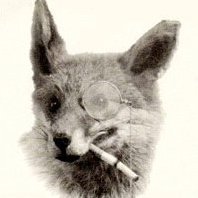
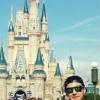
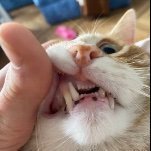


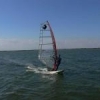


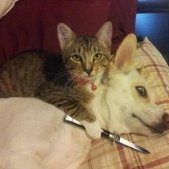
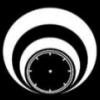
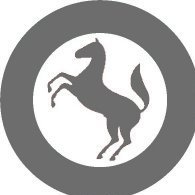




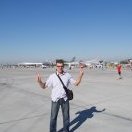

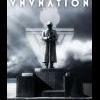

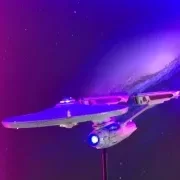
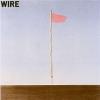
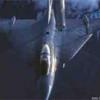
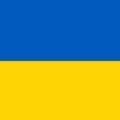
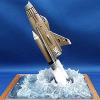
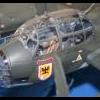

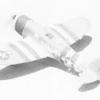
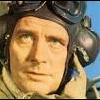


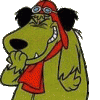
.thumb.jpg.cfc129272ffec824439b15e6013d5952.jpg)

